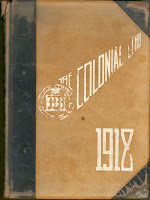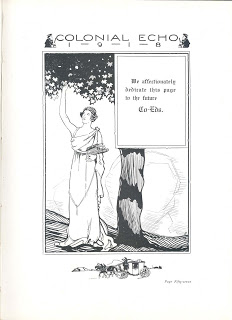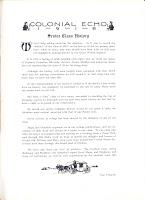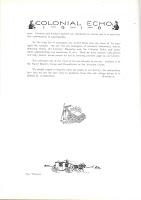As the school year was winding down at the College of William and Mary, President Lyon Gardiner Tyler was in the process of adjusting the College for the incoming class of women. On June 4, he wrote a letter to Dr. Walter Montgomery, asking his opinion on a candidate for the new Dean of Womenposition, Eleanor W. Bouldin. In the letter, Tyler asked Montgomery if her "scholarship rank[s] with the professors of the college [because] the Dean of Women is to be given a place in the faculty."
While Bouldin did not become the Dean of Women, this letter shows that President Tyler did not want to offer just any woman the position, but went through the same hiring process that he did for all other positions at the College. He was attempting to find the best candidate for the job to provide the incoming women with the appropriate guidance to help them transition into their new environment.
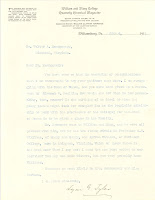
Letter to Dr. Walter Montgomery from Lyon Gardiner Tyler, dated June 4, 1918, discussing a possible candidate for the new Dean of Women position. Office of the President, Lyon Gardiner Tyler, Box 2, Folder "Co-education, 1910-1919." Click on image to enlarge.
This post was composed by Jordan Ecker.
For additional information about the first women students at the College of William and Mary see: When Mary Entered with her Brother William: Women at the College of William and Mary, 1918-1945 by Laura F. Parrish; "The Petticoat Invasion": Women at the College of William and Mary, 1918-1945; The Martha Barksdale Papers; and the Women at the College of William and Mary page on the Special Collections Research Center Wiki.

Letter to Dr. Walter Montgomery from Lyon Gardiner Tyler, dated June 4, 1918, discussing a possible candidate for the new Dean of Women position. Office of the President, Lyon Gardiner Tyler, Box 2, Folder "Co-education, 1910-1919." Click on image to enlarge.
This post was composed by Jordan Ecker.
For additional information about the first women students at the College of William and Mary see: When Mary Entered with her Brother William: Women at the College of William and Mary, 1918-1945 by Laura F. Parrish; "The Petticoat Invasion": Women at the College of William and Mary, 1918-1945; The Martha Barksdale Papers; and the Women at the College of William and Mary page on the Special Collections Research Center Wiki.
